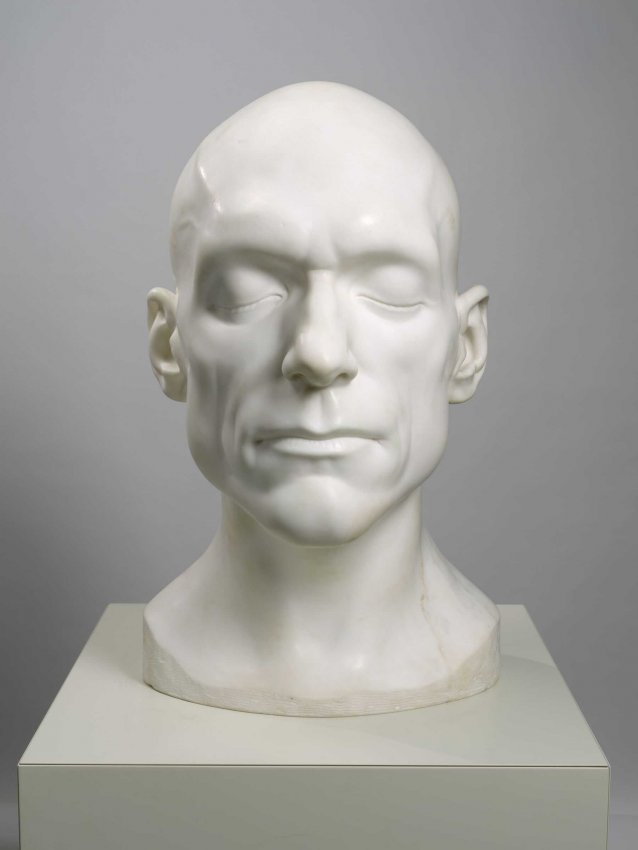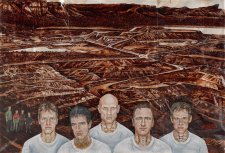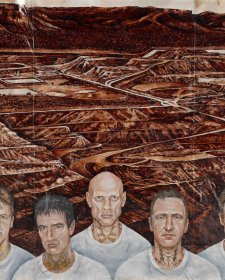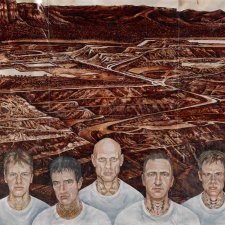From a really early age, my father used to take me onto building sites and give me a hammer and some nails and I'd sit there, at three years old, knocking things together. It just progressed from there, billy carts and cubby huts and all manner of things, I just always made things. Then I went through school where sort of art wasn't really, in my time, wasn't really encouraged, it was regarded as a sort of a hobby at best and went into graphic design, lasted only six months there and the Dean there said, 'You'd be better as a fine artist.'
So I started making some sculpture and really liked that and just really liked the process, particularly carving, and finished up getting an Italian government Scholarship. Went to Carrara in Italy and that's where really, that was a sort of a transforming experience for me. Here I was at the heart of stone, heart of this place that's been for thousands of years mining with the tradition that's, you know, Michelangelo, everybody went there. It was just the Italian culture, the mountains, it was, it was an amazing, absolutely amazing time.
From that point I knew what I wanted to do. I work in marble because it can suggest so many things. It's like got a language, you know, it can suggest skin or it can suggest drapery, it can suggest, I mean, I do, I am a figurative artist, I like to work with the human figure and so it really, really suits what I try to express. So portraiture, I didn't do until I was much, until I'd been many, many about a decade into the stone. Initially I and still do make models in clay or drawings of models and I work, I take photographs. I'll work out the model.
I know the size of the block I need and then it's a matter of going to Carrara and finding something and each block is different. There's never, there's no one block that's, you know, that there's no two blocks that are the same and I gotta say, it speaks to me when I see a block. I either like it, or I don't like it. I don't think that stone is a dead thing, I think it's alive. It's actually seashells that were laid down millions of years ago and then compressed and squashed and as the tectonic plates move, they thrust up into these mountains. So it's got energy, you know, and so for me, I feel a little bit disappointed if people don't wanna go up to it and I don't feel I'm doing my job properly then. I think it's gotta evoke that, it's gotta want to entice people to touch it. You know, it's a sensuous thing, it's a beautiful material, so.
I think I was telling somebody before that if you go into St. Peter's there's a bronze of St. Peter, I think it's from the 12th century, it's foot has been all, it's all sort of amorphous weird shape and it's polished bronze, but from people kissing it. That's amazing I think, that you know, that sort of stuff I really love. To me, it's always important how something sits, it's gotta be properly engineered, it's not gonna fall over and hurt somebody you know, I mean the weights that I'm dealing with sometimes, you know, tonnes and tonnes of weight, so.
I did a piece in St. Stephen's Cathedral, it was just hanging on a wall, it's about three tonnes, you know, so to get it, even just to put it up there was a big effort, so. But I enjoy it, crazily enough. I make my life, you know, dragging these stones around the world and logistically it's quite a, quite a effort to do these things, but I've got many years of experience and I saw it when I was in Italy, how you pick things up. The thing is with marble, especially if it's finished and polished, it's slippery. So I'm always a bit anxious, even though, you know, I come here this morning, even though I've got 40 years of experience, I'm always a little bit anxious about actually moving the things because touch wood, is there some wood around here? I haven't had any accidents and although I've seen them happening with other people, so.
Well, I started about more than 25 years ago I think. I wrote to Pete and he was initially not really interested in the idea because he's, he's not really interested in himself. He said, 'Why do you wanna do a portrait of me?' And I said, 'Well, look at you, you know. Somebody's gotta do a portrait of you. I mean, someone will do a portrait of you, and it might as well be me.' And seeing the band live and seeing this, you know, this big primal gangly sort of half stick-figure scarecrow, amazing presence that he had on stage, I just wanted to do, I wanted to do something to capture this sort of, for me a quintessential Australian sort of character. I made a plaster mold and then did a clay study and then enlarged the piece using, I use callipers and things to enlarge it in stone. And basically then you just finish work from the model and interpret the details to what, what I've got there.
I really like realism but I'm not so much concerned with exact realism. I try to find between stylisation and realism, looking for that balance that I like. Sculpture works with very simple things like the hole in the lump and the way the light comes off whatever you shape and what that evokes and if that, you know, you can engage not only yourself, but you engage an audience, that's the game.














